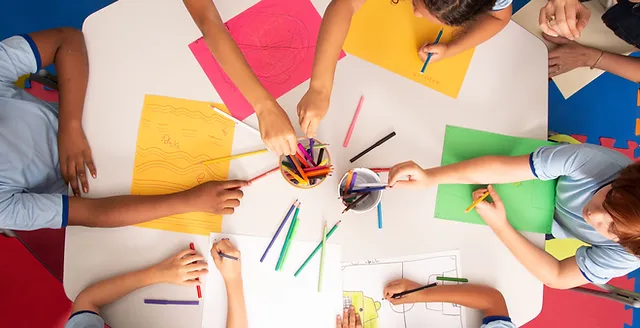Introduction
In the ever-evolving landscape of education, the call for reform in STEM learning approaches has gained considerable traction. As we stride deeper into the 21st century, the demand for a workforce well-versed in STEM fields continues to burgeon. To meet this demand, educators are exploring innovative methodologies, and among these, Project-Based Learning (PBL) stands out as a promising approach.
Understanding Project-Based Learning
PBL is a pedagogical strategy that immerses students in real-world, multidisciplinary projects to facilitate deeper learning. Unlike traditional rote memorization or lecture-based teaching, PBL champions a hands-on, inquiry-based method. Students, within this framework, embark on investigative journeys, tackling problems, and devising solutions while simultaneously honing critical skills.
The Transformative Power of PBL
The infusion of PBL in K-12 STEM education has yielded transformative outcomes. Firstly, it cultivates a culture of curiosity and exploration. By engaging in projects that mirror real-world challenges, students develop an innate inquisitiveness, driving them to seek solutions and understand the underlying principles. Secondly, PBL nurtures collaboration and communication skills. Through teamwork, students learn the art of cooperation, respecting diverse perspectives, and collectively brainstorming solutions. Furthermore, articulating findings and ideas becomes an intrinsic part of the learning process, fostering effective communication skills. Thirdly, PBL fosters creativity and innovation. Encountering authentic problems necessitates inventive thinking. Students are encouraged to think beyond conventional b oundaries, fostering a mindset that values innovation and originality.
Overcoming Challenges in Implementing PBL
However, integrating PBL into traditional curricula isn’t without hurdles. Time constraints, standardized testing pressures, and resource limitations often pose challenges. Educators must receive adequate training and support to effectively implement PBL. Additionally, aligning projects with academic standards while allowing for flexibility remains a balancing act.

Successful PBL Implementation Models
Several K-12 institutions have successfully incorporated PBL into their STEM curriculum. Take, for instance, a middle school where students, in collaboration with local engineers, designed sustainable solutions for their community’s environmental issues. This hands-on approach not only enriched their scientific knowledge but also instilled a sense of social responsibility. Similarly, a high school integrated robotics projects into their physics curriculum, encouraging students to apply theoretical concepts practically. This approach not only bolstered STEM understanding but also ignited interest in engineering careers.
Future Prospects and Recommendations
As we navigate the educational landscape, the role of PBL in STEM education will likely amplify. To further its efficacy, stakeholders must invest in professional development for educators, allocate resources for project implementation, and encourage collaboration between schools and industries. Moreover, incorporating technology can enhance PBL by offering tools for data analysis, simulations, and global connectivity. Leveraging virtual collaboration platforms can facilitate interactions among students from diverse backgrounds, fostering a richer learning experience.

Conclusion
The integration of Project-Based Learning in K-12 STEM education heralds a paradigm shift. By nurturing critical skills and fostering a holistic understanding of STEM disciplines, PBL stands as a beacon for creating a workforce adept at tackling the challenges of tomorrow’s world. As educators and policymakers embrace this transformative approach, the seeds sown today through PBL will blossom into a future where innovation, collaboration, and problem-solving thrive in the hearts and minds of our students, shaping a brighter tomorrow for STEM industries and beyond.




